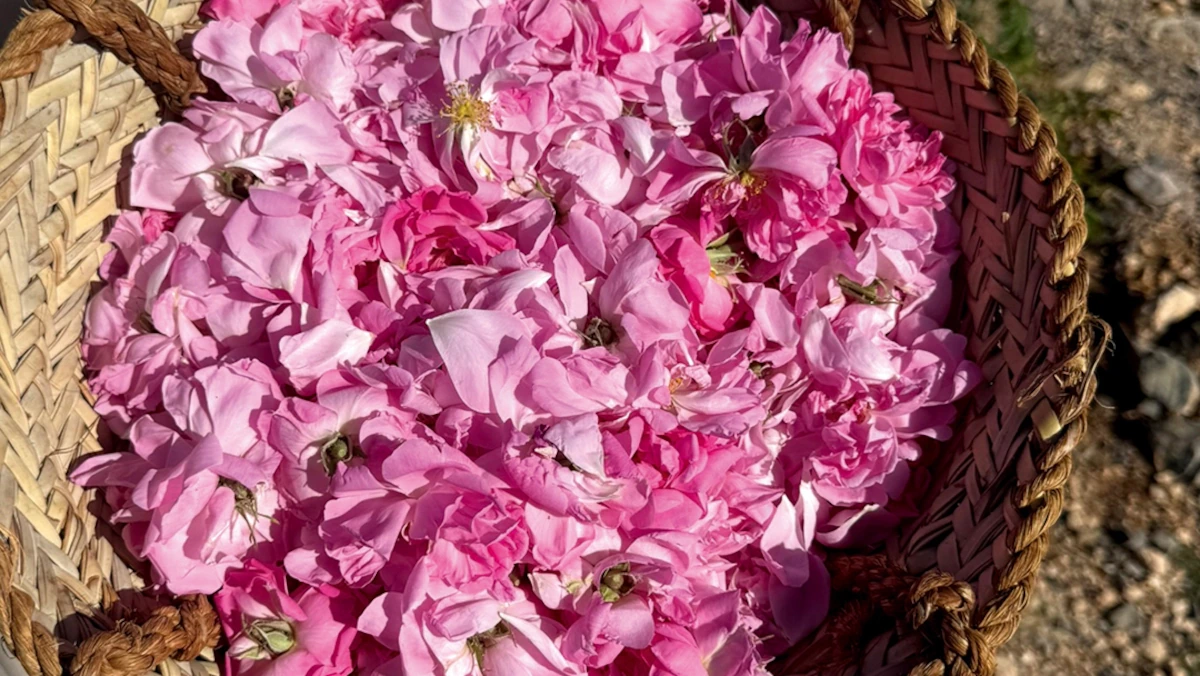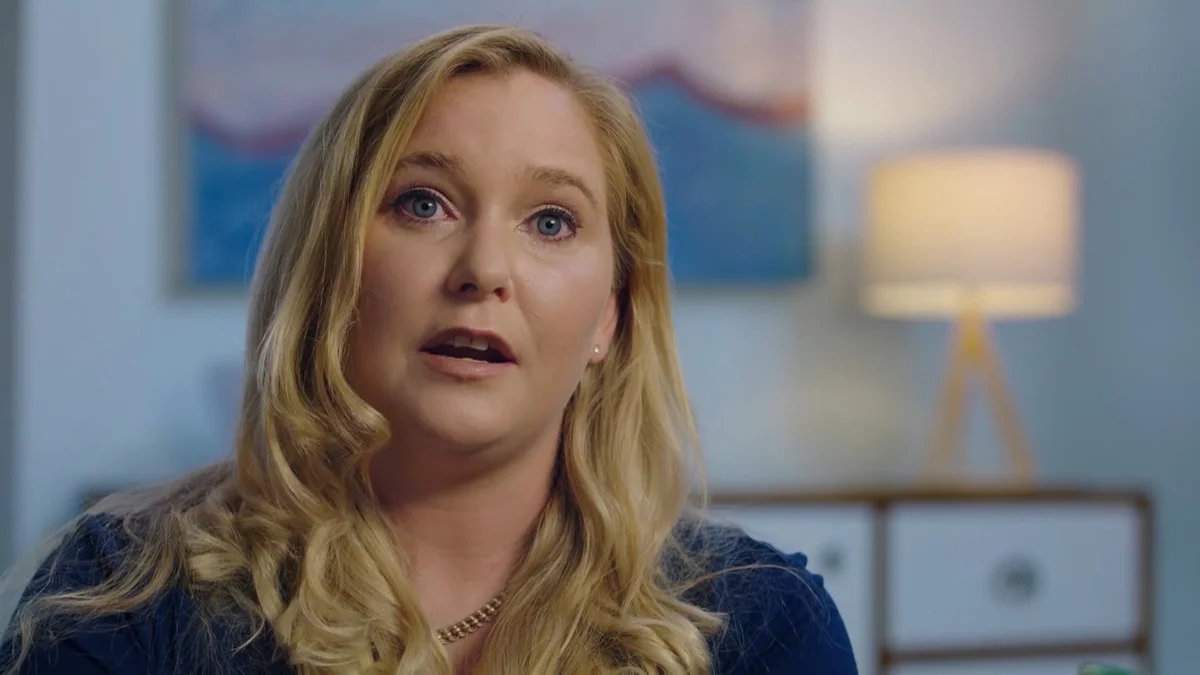Copyright National Geographic

“This perfume was first made for royalty.” The salesman at Amouage perfume factory in Muscat is pointing towards a 24-carat gold flask, a tiny, exquisite bottle shaped like a khanjar, Oman’s traditional dagger. “There are 120 ingredients in here, with two in particular that really represent Oman: rose and frankincense,” he says. The fragrance house was commissioned by Oman’s beloved late Sultan Qaboos bin Said al Said in 1983 and its name, Amouage, comes from the Arabic word for waves. It's fitting considering Oman’s strategic position on the eastern tip of the Arabian Peninsula, where the Persian Gulf meets the Arabian Sea. At the heart of ancient trade routes, the country's location was intrinsic to its rise as a maritime superpower in the 18th and 19th centuries. The empire may no longer remain, but its influence can be found everywhere: from the multiple languages spoken on the streets of Muscat to the ingredients, like Indian oud and Persian saffron, blended into its perfumes. It’s my curiosity about the two key ingredients in that golden khanjar — rose and frankincense — that’s brought me to Oman. “We’ll stop off at the souk in the city of Nizwa, which was once Oman’s capital,” my guide Khalid Al Rawahi tells me from behind the wheel of his 4WD. I’ve only spent a couple of hours with the former sergeant, who’s dressed in a crisp white dishdasha (traditional robe) and mussar (turban), but his encyclopaedic grasp of the country’s history already makes him feel like an all-knowing Omani uncle. We’ve left Muscat behind, setting off on the 100-mile drive to Jabal Akhdar, a region high in the Hajar Mountains. It’s here, from late March through to the end of April, that Oman’s prized damask roses bloom on staggered terrace farms that cling to the sloping peaks. Nizwa’s walled souk provides welcome relief from the 40C midday heat. In the past, people would travel here by donkey to sell their rosewater in the market, Khalid tells me as we wander its maze of treasure-filled alleys. We pass a shop selling halwa, the country’s much-loved sweet treat, and Khalid buys a rose-flavoured version for me to sample. The consistency is similar to soft fudge, the taste floral but surprisingly smoky. “We Omanis prefer smoky rosewater,” Khalid reveals. “In the past, we’d wear it as perfume, too. Hosts would put rosewater on guests’ hands after eating halwa or spicy foods. You’ll see how we make it in Jabal Akhdar.” We depart Nizwa the following morning, the temperature dropping by 10C on the ear-popping 40-minute drive. Jabal Akhdar is known for its mild climate and the road — carved into solid rock from the palm-covered village of Birkat Al Mouz — opened in 2006, replacing a gruelling six-hour trek. At the top, a sherbet-sweet breeze greets us, carrying the scent of thousands of magenta petals spread across the mountainside. Here, farmer Qais Al Amri and his family have been up since dawn, gathering roses from their fields. “Listen for the tick,” says Qais, as he removes the flower from its stem in one rapid hand motion, producing a satisfying clicking sound. “You try,” he nods. I fumble unsuccessfully and dozens of silky petals fall to the ground. During the height of the season, the family collect more than 60,000 roses a day. We bring our flowers to Qais’s small rosewater distillery, Dehjan, named after the traditional tools used to draw out rose essence. He lights a fire in a knee-high stone oven and sets a terracotta pot of roses above the heat, topped with a small copper vessel. A bowl of cold water seals the pot, guiding condensation upwards until the copper catches drops of fragrance. “Every three hours we change it,” Qais explains, handing me a bottle of golden liquid from an earlier batch — it’s smoky and sweet, similar to yesterday’s halwa. Qais also produces clear rosewater — without the smoky hit. In a large metal oven, about 6,000 roses are slowly steamed for 12 hours to yield 40 litres of liquid. The real prize, however, is the pure rose oil that rises to the top of the batch. “The price is around 75 OMR (£145) for 3ml. This is what we use in perfume,” he explains. Lesson in perfume-making complete, I mooch around Qais’s tiny on-site shop, where I notice a small jar containing rose-scented wood chips known as bukhoor. Burning these chips, in a similar way to incense, is an age-old tradition across the Gulf. “Omanis love bukhoor,” Khalid says. “Wait until you get to Salalah — the city is very famous for it.” My mountain base for the past couple of nights has been Alila Jabal Akhdar, a secluded resort located on the edge of a yawning canyon, and it seems fitting that I spend the last evening experiencing its Rose Ritual at the spa. Ceremonial in nature, it begins with a rosewater footbath, before I’m scrubbed with an invigorating blend of rose petals, ginger, sea salt and lime. A rose-oil-infused massage follows, and I sink into a relaxed stupor as the same sherbet aroma from earlier in the day envelops me. Land of frankincense Dust rises up from the bone-dry earth of Wadi Al Mughsail, cloaking our 4WD as we wind our way behind Oman’s Dhofar Mountains. Against a backdrop of taupe-hued peaks and the dulcet tones of my guide, Ahmed Rafeet, we head towards the homestead of Sheikh Ahmed Al Amari, whose family have been extracting frankincense from the boswellia sacra tree for generations. Dressed in a smart brown dishdasha, Sheikh Ahmed welcomes us with a hand on his heart and we sit on a blanket beneath the canopy of a boswellia sacra, its papery bark wrapped around gnarled, twisting branches. His son Salim pours cinnamon-laced black tea that’s been brewing on a fire and presents me with a bowl of majeen, a local snack made from dried camel meat. The taste is unexpectedly delicate, a little salty, a little smoky, with a chewiness that lingers like cured beef jerky, though sweetened by the addition of dates and spices. Sheikh Ahmed leans on a walking stick to steady himself on the rocky terrain, and with a traditional handheld blade called a mengaf, he chips away at the tree’s flaky bark, making a soft surface wound. The scratch reveals a vibrant green layer before ivory flesh becomes visible underneath. Soon, speckles of white liquid start to appear. “That’s the frankincense,” Ahmed tells me. It will take at least a week for it to form into a golden resin on the tree, at which point, Sheikh Ahmed will collect the crystals. The boswellia sacra holds almost sacred status in Oman. “In the past, when there were no schools, no roads, no cars, no electricity, frankincense helped to give people a good life,” Ahmed explains later. “They would exchange it for money, but also clothing, rice and dates.” Today, the precious resin is protected, as are the trees that provide it, and before exploring Salalah itself, we stop at one of country’s most important sites: the Wadi Dawkah forest. It’s an incredible sight, with 4,000 boswellia sacra trees rising up like wind-swept sculptures across the sprawling desert valley. Together, with the remains of the desert trading post of Shisr, the fourth-century BCE port of Sumhuram and the eighth-century port of Al Baleed, it forms the Land of Frankincense UNESCO World Heritage Site. It’s estimated that frankincense was exported from the Arabian Peninsula’s southern coastline to the shores of ancient Egypt as early as 3000 BCE, but its ancient history hasn’t made the fragrant resin any less relevant today, and it remains an integral part of everyday life in Oman. “We use it before sunset,” says Ahmed as we climb back in the car to set off again. “People think it makes your house safe from jinn (spirits), but it’s also found in medicines, hair oil and of course perfumes.” We arrive in Salalah in the thick, sultry heat of mid-afternoon. Once the humit Anantara Al Baleed Resort and head for the city’s beachside Al-Hafa Souq, known locally as the Old Frankincense Market. Ahmed suggests stopping at the shop of celebrated perfume connoisseur Um Muna. Her namesake boutique opened three decades ago, and is now run with the help of her daughter, Muna, who greets us warmly at the counter. Inside, shelves stacked from floor to ceiling overflow with hundreds of bottles of fragrant oils and perfume. I ask Muna to help me choose some bukhoor. Browsing the shelves, she selects a jar. “This one is sandalwood,” she says, bringing the pot closer to my nose so I can inhale its warm, creamy scent. For a while, I dip my nose in and out of small glass jars scented with cardamom, rose and saffron. Muna lights charcoal in a terracotta goblet called a mabkhara and places a small chip of bukhoor on the heat. As she moves the clay pot in slow, circular motions, swirls of saffron-laced smoke fill the air. My attention turns to a large bowl of whitish-green pebbles. “That’s Hojari frankincense, it’s the best,” says Muna. “Try it,” she insists, gesturing for me to put it in my mouth. I reluctantly start to chew on the hard resin, which quickly becomes the texture of chewing gum, but with a refreshing pine-like flavour. Muna then places a piece of golden Najdi frankincense in the mabkhara and the sweet scent of the saffron is replaced with something smokier, something holy. It’s a rich, resinous, distinctive aroma that’s both woody and citrusy, with a touch of spice, and one that seems wholly synonymous with this country. It’s this scent that I imagine would have filled the air 2,000 years ago in the ancient port city of Sumhuram, my final stop on this perfume trail that’s taken me from Oman’s mountains to the shores of the Arabian Sea. Perched high above the water, the Sumhuram UNESCO World Heritage Site is 25 miles east of Salalah and was once the heart of Oman’s frankincense trade. As I gaze down from its fortified walls, I see the remains of the buildings where frankincense was once stored before being shipped across these very waves. The world may have changed beyond recognition since then, but Oman’s prized golden resin remains just as precious.



